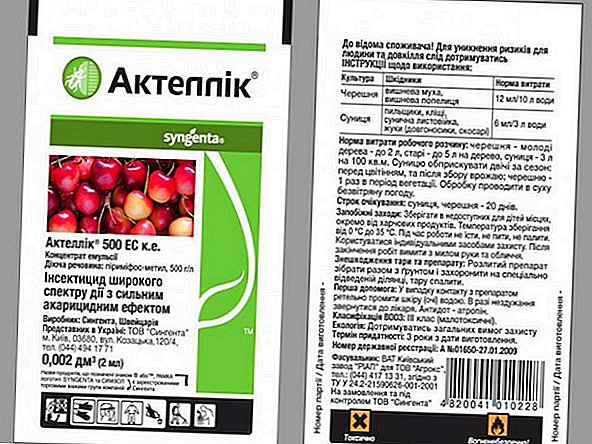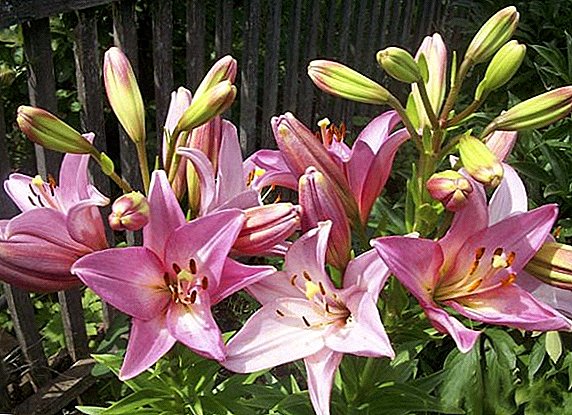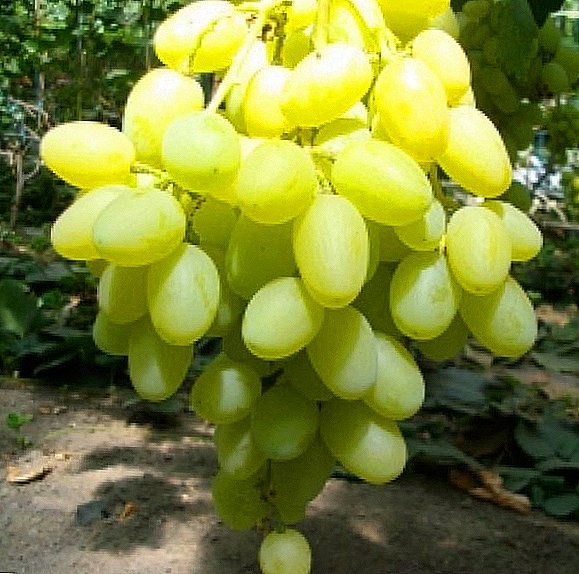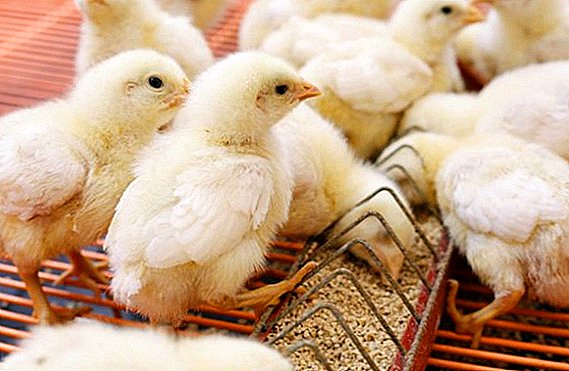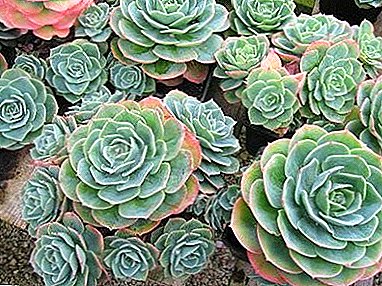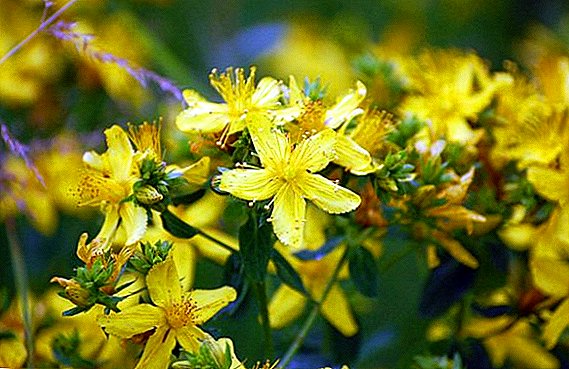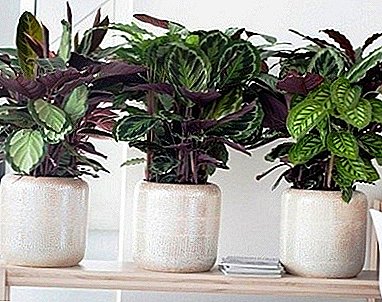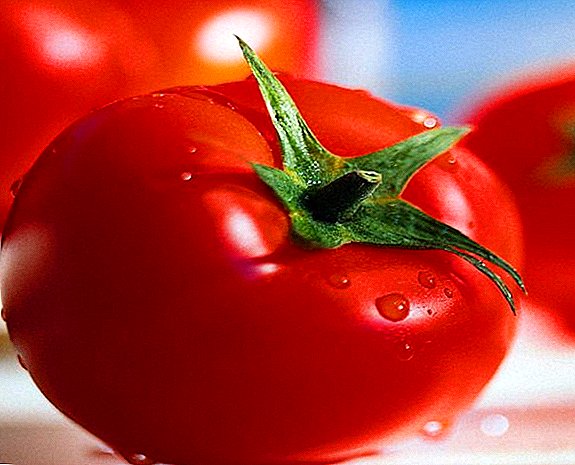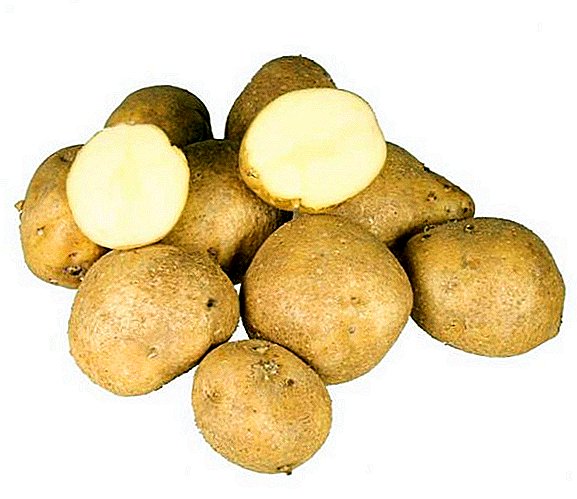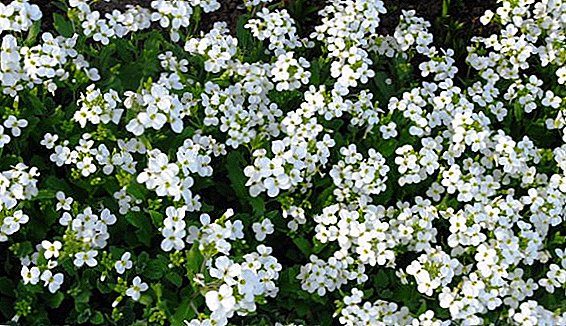 Many gardeners every year are looking for a new "candidate" to decorate their garden. I don’t want to plant well-known tulips or daffodils, but to find an unpretentious and, at the same time, beautiful plant is very difficult. That is why we will discuss the planting of arabis, its reproduction and cultivation before picking in open ground. We will figure out which flowers look best with arabis, when it blooms, how to extend this process.
Many gardeners every year are looking for a new "candidate" to decorate their garden. I don’t want to plant well-known tulips or daffodils, but to find an unpretentious and, at the same time, beautiful plant is very difficult. That is why we will discuss the planting of arabis, its reproduction and cultivation before picking in open ground. We will figure out which flowers look best with arabis, when it blooms, how to extend this process.
Planting and reproduction of arabis
We begin the discussion with different variants of flower reproduction, which are used by both experienced gardeners and beginners in this difficult task. 
Growing from seed
The first breeding arabis - growing from seed.
This option is used in the case when you do not have a mother plant and the only way to get a beautiful flower is to buy seed. It is recommended to purchase it in specialized stores, since it is not difficult for unscrupulous sellers in the market to forge packaging and fill up the seeds of a completely different plant.
Important! Before buying, check the date of packing, as the seeds have a certain expiration date, after which the germination drops several times.

Let's talk about when to sow arabis on seedlings. Sowing is carried out either in autumn (October) or in spring (April or May). It should be noted right away that autumn sowing is not very convenient, since the daylight hours are very short, and the room temperature does not always allow creating the necessary conditions for weak shoots. However, if you live in the southern regions, then you can choose any option.
As for the soil, almost any flowable substrate from a flower shop that can be “sweetened” with peat tablets (previously soaked) will do. You can also make your mix by mixing in equal parts turf soil, sand and humus, but still it is better to give preference to the purchased soil, which is already decontaminated. It is worth remembering that the temperature of the soil should be around 20 ° C in order for the seeds to "wake up" and sprout.
If you want your flower to grow healthy, you can use cow, pork, horse, sheep and rabbit humus as a fertilizer for the soil.The container should be chosen wide and shallow (no more than 10 cm in height) so that moisture does not linger in the ground.

Seeds should be deepened by 4-5 mm, which can be achieved by simply pressing down on the seed spread over the surface.
Important! To increase germination and facilitate irrigation, cover the soil after sowing with non-woven material.After sowing, it is necessary to keep the substrate moist and place the container in a bright place where there are no drafts.

Cuttings
Discuss the cultivation of arabis from cuttings. This option is available only if you have a mother plant. We do not recommend buying cuttings anywhere.
Cut cuttings should be immediately after flowering. We retreat from the top about 10-12 cm and make an oblique cut. At each handle should be at least five nodes, so adjust the length depending on their number.
Then you can put the cut shoots in the root growth stimulator in order to achieve the speediest germination, or immediately plant the cutting in the ground, deepening 2/3 of its length. Cuttings should be planted at an angle of 45 ° in order to achieve proper growth of the rhizome. 
Important! Lower leaves should be broken off before planting.After a few weeks, the young plant will take root and grow. In the autumn of the same year, arabis can be transplanted to a permanent place.
Bushes division
This is probably the easiest way to breed which does not require the use of any drugs for germination, special conditions or costs.
It is possible to divide a bush both in the middle of spring, and at the end of summer. Theoretically, about 15 new plants can be obtained from a single shrub, however, we recommend dividing it into large pieces in order to increase survival. 
It is worth noting that only those bushes that have turned 3-4 years old can be divided. Younger ones may die when dividing.
The process is as follows: gently dig up the rhizome and with a sharp knife separate part of the aboveground and underground parts from the mother plant. The cut should be sprinkled with activated charcoal so that the plant does not hit the fungus.
Then we plant a new bush in a new place, burying it to the same depth, on which the mother bush grew. Water and shade from direct sunlight for 2-3 days for better survival.
Interesting is that the separated part of the bush can bloom in the same season in which you transplanted. Therefore, this method is the most popular. 
Did you know? Arabis, following the botanical description, has a fruit in the form of a pod, like all members of the Cabbage family (cabbage, horseradish, radish, and others).
Combination with other plants
As for the combination with other flowers, the arabis looks more colorful in tandem with early onion plants (tulip, crocus, muscari, iris, spring and others). Arabis is suitable for creating different compositions with other colors, as well as for "solo" planting in the form of a border or background in a rose garden. Most often the mountain plant is used in the decoration of rock garden or rock arias.
Important! When planting arabis in tandem with other flowers, it is worth remembering that with uncontrolled growth, it quickly drowns out neighboring plants.

Features care for arabis
We figured out which plants are “friendly” with arabis, discussed ways of reproduction and planting, and now we should talk about caring for the plant.
Watering, weeding and loosening the soil
Let's start with watering, as in this regard, the plant is different from many flower beds. The fact is that the arabis, although it requires a certain soil moisture, but a small drought is not critical. But excessive watering can quickly kill the plant. It is for this reason that frequent watering is carried out only during heat waves, when the soil dries and cracks. We recommend mulching the soil to prevent drying. In this case, even on the hottest days, the root system of the plant will not overheat, and the soil will remain wet.
If you are not going to mulch the planting, then at the initial stage you will have to constantly carry out weeding and loosening the soil to prevent rapid growth of weeds. When arabis get stronger in a new place, then he will perfectly cope with weeds.  Above we mentioned that when arabis goes into rapid growth, it drowns out the planting of all nearby plants. For this reason, it is necessary to carry out trimming in order to preserve the shape of the plantings and to prevent the death of other colors. Trimming is carried out in an arbitrary version, that is, you form such a shape and height that suits you. However, this should be done after the Arabis fully take root in the new place.
Above we mentioned that when arabis goes into rapid growth, it drowns out the planting of all nearby plants. For this reason, it is necessary to carry out trimming in order to preserve the shape of the plantings and to prevent the death of other colors. Trimming is carried out in an arbitrary version, that is, you form such a shape and height that suits you. However, this should be done after the Arabis fully take root in the new place.
Did you know? A distinctive feature of the Cabbage family is the presence of two-year herbs that bloom only in the last year of life.
Plant nutrition
Lack of feed is not critical for arabis, but if you want to achieve long-term flowering with a huge number of peduncles, then you need to make special fertilizer for flowering plants, which can be purchased at any flower shop. Close up fertilizing begin immediately after transplanting to a new place. Fertilizers need to throughout the flowering.
To arabis could continue to bloom, apply such fertilizers: "Stimulus", "Flowering", "Epin Extra" and "Agricola".
Wintering
If you live in the southern regions, then you do not need to prepare the plant for winter, as the arabis can withstand temperatures down to -7 ° C. In the event that in winter the temperature can fall below this, the flower should be covered with agrofibre, dry leaves, or some other material that does not accumulate moisture. It is worth remembering that, even if the winter is warm, before the onset of cold weather it is imperative to cut off the aboveground part, leaving no more than 4 cm above the ground level. If pruning is not carried out, then even minimal frosts will kill arabis.
Did you know? Arabis is used as a honey plant, as its sweetish aroma attracts bees. The resulting honey has a slightly tart taste.
Combating possible pests and diseases
Finally, let's talk about possible pests and diseases that can plague arabis.
In general, the plant is resistant to most diseases, but there is one incurable disease that can destroy not only flowers, but also vegetable crops.  The disease is known to many gardeners under the name "viral mosaic". This is a virus that infects many plants in the garden. The first symptoms were discovered at the end of the XIX century on the plantations of tobacco. The only deliverance from the disease was the complete destruction of all affected vegetation and disinfection of the soil. Since then, no effective medicine has been invented that could cope with the virus. Having told a little background, we learn about the symptoms of the mosaic: the appearance of spots of various colors and sizes on the leaves and shoots; slower growth and development; violation of water metabolism (the leaves dry out with a sufficient amount of moisture in the soil).
The disease is known to many gardeners under the name "viral mosaic". This is a virus that infects many plants in the garden. The first symptoms were discovered at the end of the XIX century on the plantations of tobacco. The only deliverance from the disease was the complete destruction of all affected vegetation and disinfection of the soil. Since then, no effective medicine has been invented that could cope with the virus. Having told a little background, we learn about the symptoms of the mosaic: the appearance of spots of various colors and sizes on the leaves and shoots; slower growth and development; violation of water metabolism (the leaves dry out with a sufficient amount of moisture in the soil).
It is worth remembering that the development of the disease contributes to increased humidity and air temperature above 20 ° C.
Important! All tools that have been used to remove infected plants should be thoroughly disinfected before further use.
 On arabis parasitic thunderstorm of cabbage crops - cruciferous flea. This is a species of ground beetles that are common in Europe, the Caucasus and in Central Asia.
On arabis parasitic thunderstorm of cabbage crops - cruciferous flea. This is a species of ground beetles that are common in Europe, the Caucasus and in Central Asia.The problem is that not only adult beetles cause harm, but also their larvae, so you should not delay the treatment. Recognize the "activity" of beetles can be on the eaten young leaves of arabis seedlings, the presence of holes in the green plates. With a massive defeat of the cruciferous flea, the plant loses the critical weight of green mass and dies.
To combat the pest should be as follows:
- The processing of planting tobacco dust paired with ash in equal proportions.
- Processing chemicals ("Actellic", "Bankol").
- Installation around the affected plants adhesive tape.
